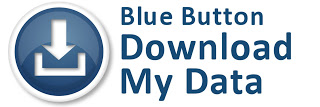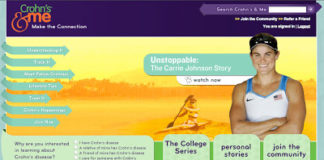Today I will listen to the BlogTalkRadio show “E-patients, Cyberchondriacs, and Why We Should Stop Calling Names,” which promises to be an “open, honest and stimulating discussion” about the “potential implications of the use of the term e-Patient and why some argue that it should be reconsidered.” As background to that discussion, see this blog post by Susannah Fox (@SusannahFox) who leads the Pew Internet & American Life Project’s health research. Susannah will be a guest on the BlogTalkRadio show today and will be speaking at the e-Patient Connections 2010 conference next month in Philadelphia, PA.
In her post, Susannah says: “In short, the data — Pew Internet’s and others’ — are quite clear that the online health revolution is over and that use of digital tools in tackling health problems is the natural state of affairs.”
I would argue that the online health revolution is no where near “over” just because the data shows that seeking health information online is now part of mainstream America (ie, 61% of American adults looked online for health information in the past year).
Seeking and FINDING credible, actionable, and personal health information online are TWO DIFFERENT things!
One piece of the online health revolution that has not yet occurred is the ability of the majority of Americans to easily access online their personal health information — things like summaries of doctor visits, medications you are currently taking, or test results. I have been thinking about this recently. With diet and exercising — something pharma marketers are often required to suggest in ads — I recently lost 25 lbs. But my doctor told me my cholesterol is still too high. She wanted to prescribe a stronger cholesterol-lowering drug that I would have to take for the rest of my life, whereas one of my goals for losing weight was to stop taking this medication all together. What I wanted to know — and what my physician didn’t tell me — was how my numbers compared pre and post weight loss. To get that information, I would have to go back to the doctor’s office and ask her for the data. Why can’t I just push a button in my Internet browser and get the data myself???
Yesterday, the Markle Foundation released a policy paper that said the ability for people to download their health records should be a priority in the nationwide push to upgrade health information technology. A public-private collaborative group of 46 providers, consumers, technology companies, insurers, and privacy advocates envisions a “blue button” as a common offering among secure websites for patients and beneficiaries by medical practices, hospitals, insurers, pharmacies, laboratories, and information services (see “Empowering the ePatient: A Simple “Blue Button” to Access Medical Records Online“).
“By clicking the blue button, you could get your own health information electronically—things like summaries of doctor visits, medications you are currently taking, or test results. Being able to have your own electronic copies and share them as you need to with your doctors is a first step in truly enabling people to engage in their health care,” said Carol Diamond, MD, MPH, managing director at Markle.
Soon US Veterans will have such a “blue button” (see Blue Button: Download My Data): President Obama announced the blue button for veterans in an August 3 address. “For the first time ever, veterans will be able to go to the VA website, click a simple blue button and download or print your personal health records so you have them when you need them, and can share them with your doctors outside of the VA,” the President said.
IMHO, when ALL Americans have access to a “blue button” the online health revolution will truly have just BEGUN!
P.S. “Question to Ask Your Doctor”: Where’s My Blue Button?
After posting this, I saw a tweet from @AstraZenecaUS:
“September is National Cholesterol Education Month. See your doctor and visit http://ow.ly/2qo5v for a list of questions to ask.”
This resolves to a page on the Crestor Web site. It just so happens that Crestor is the drug my doctor wants me to take instead of generic pravachol.
There are about 16 questions in AZ’s list! Given that the average time a patient has with a physician during an office visit is maybe 10 minutes, that’s about 38 seconds to ask each question and get an answer! Is AZ kidding? No wonder we don’t remember what the physician told us!
One question that AZ left was “How can I get my personal health record online so that I remember all this and can use it?”
It’s also amusing that AZ suggests you print out the pdf version of its list of questions and bring it with you to the doctor’s office. How quaint! Shouldn’t there be a “Share This With Your Physician” button on the page so that you can send the questions immediately to your physician before you even see her? Now that’s when the online health revolution will truly begin here in the US!









![6 Digital Tools at the Center of Healthcare Digitalization [INFOGRAPHIC]](http://ec2-54-175-84-28.compute-1.amazonaws.com/pharma-mkting.com/wp-content/uploads/2021/04/6DigitalTools_600px-100x70.jpg)




